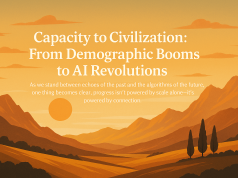The notion of the 9 to 5 workday has been as ingrained in American culture as apple pie and baseball. For generations, employees would clock in and out at the same time each day, with productivity, presence, and punctuality intertwined. This schedule has been considered the backbone of industries, the framework within which businesses operate, and the rhythm that dictates urban life, especially in bustling hubs like New York City. But as the world shifts around us, so too must our approach to work. The question beckons: Is the traditional 9 to 5 workday still serving us, or is it time for a radical overhaul to suit the modern employee?
The past few years have been transformative for the workforce, to say the least. Remote work, once a rare perk, has become commonplace, necessitated by the global pandemic and sustained by the realization that many jobs can be done from anywhere with an internet connection. This rise in remote work calls into question the very need for strict office hours. If an employee can successfully complete their tasks from a home office or a coffee shop, does it matter if they do it at 9 am or 9 pm?
The gig economy has also been a game-changer, with more people than ever before freelancing or working multiple part-time jobs. This shift towards project-based and temporary roles means that the construct of a 40-hour week with a single employer is not universal anymore. Furthermore, technology has stoked the fires of this revolution, automating tasks and making communication instant and borderless, amplifying productivity and changing the landscape of what a workday looks like.
In a city that never sleeps, like New York, where work patterns are as diverse as its inhabitants, we’re seeing that one size does not fit all when it comes to work hours. A more flexible approach to work hours could be the key to unlocking a better work-life balance for many. For parents, it might mean being able to drop off and pick up their children from school without stress. For others, it could allow for an early morning gym session or an evening class that could lead to personal development or a new career path.
Employers stand to gain as well from offering more flexible work options. Job satisfaction could see a significant uptick as employees feel trusted and valued, not just for their time, but for their output. It opens the door to a wider talent pool, including those for whom traditional office hours are a barrier – parents, caregivers, or those with chronic illnesses. The potential for higher productivity is also an enticing prospect, as happy and healthy workers are typically more engaged and efficient.
Yet, with this push for flexibility, we must also be wary of the potential downsides. The blurring lines between work and personal life can lead to burnout if not managed properly. Employers must thus be vigilant in establishing clear guidelines and expectations around availability and respecting the boundaries of out-of-office hours.
In conclusion, it’s apparent that the rigidity of the 9 to 5 workday is becoming increasingly obsolete in today’s dynamic world. As we move forward, companies, especially in vibrant cities like New York City, need to continuously rethink and adapt their work schedules to fit the evolving needs of their workforce. By doing so, they will not only improve the work-life balance for their employees but also foster a progressive, productive, and contented work environment that could set the standard for the future of work globally.




























